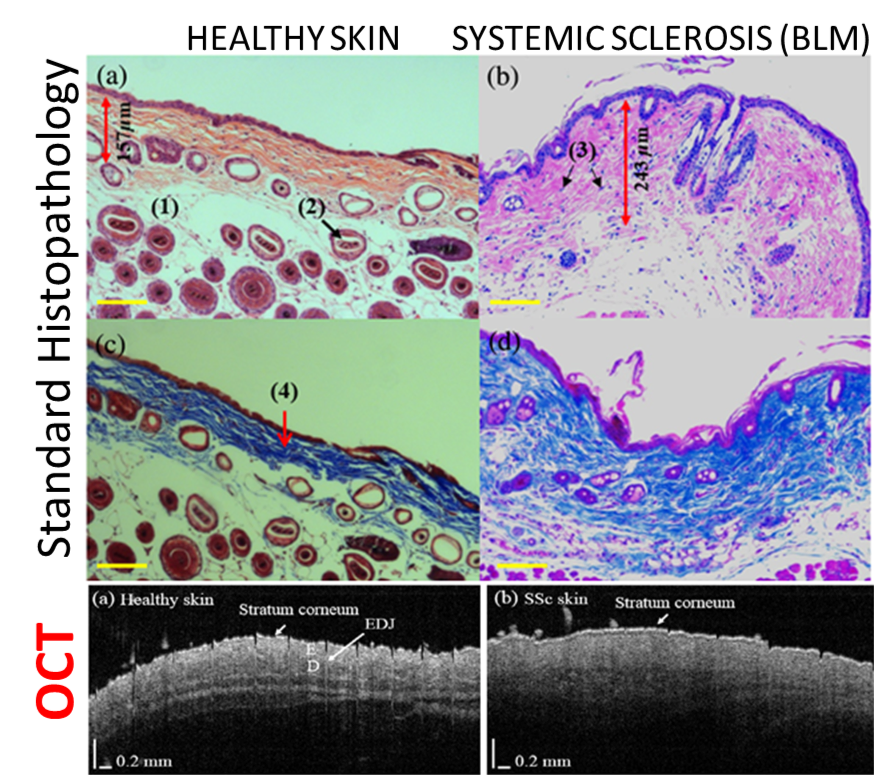
Using Optical Coherence Elastography to monitor skin lesions in Systemic Sclerosis
Team: Yanping Chen
Team Members: Phuongthy Tran, Yong Du
Collaborator: Drs. Assassi, Larin
Project Summary:
Systemic sclerosis (SSc) or Scleroderma is an autoimmune disease that results in dermal thickening due to excessive accumulation of collagen in the skin and internal organs. Optical coherence elastography (OCE) can assess mechanical contrast in tissues with micrometer spatial resolution. In this project, the OCE technique is applied to assess the mechanical properties of skin in both control and bleomycin (BLM) induced SSc-like disease noninvasively. In vivo, OCE revealed that healthy skin was significantly softer than the BLM treated skin, as revealed by the significantly higher Young’s modulus of the BLM-SSc skin.
Optical Coherence Tomography (OCT) images reveal the structural difference of epidermal-dermal junction (EDJ). The EDJ can be clearly seen in healthy control skin, while there was no clear demarcation in the fibrotic skin of BLM-treated mice.
Skin histology was examined using conventional Masson’s trichrome and H&E staining. Skin thickness and thickened collagen bundles were prominent in BLM induced SSc group. In addition, the skin fibrosis score, and skin hydroxyproline content were also significantly higher in the BLM-SSc skin than in healthy control skin.
Thus, the OCE/OCT assessment results are in good agreement with histopathological findings, demonstrating the feasibility of using OCE/OCT for detecting skin changes associated with fibrosis in SSc.
What is already known in the field?
- The BLM induced dermal fibrosis mouse model is a well-accepted model with fibrotic features similar to human SSc.
- Traditionally, the modified Rodnan skin score (mRSS), a measure of skin thickness, is widely used to assess skin involvement in SSc patients. However, there is significant inter-observer variation in doing this assessment.
What is new?
- The first use of noncontact OCE to identify elasticity changes in murine skin with BLM-induced fibrosis
- Use of combined OCE/OCT to monitor disease development and treatment response in murine SSc
Why is this important?
- The traditional assessment method based on mRSS score can be time consuming and is heavily dependent on the palpation experience of the rheumatologist, which results in subjective observation that may cause inter- and intra-observer variations.
- Therefore, a quantitative, reliable, rapid, and objective diagnostic approach for assessing skin disease in SSc is desirable to facilitate objective disease detection and monitoring.
Ongoing/future steps:
- evaluate the utility of OCE/OCT as a non-invasive technique for early diagnosis of SSc-like skin changes.
- Translational studies to patients with systemic sclerosis